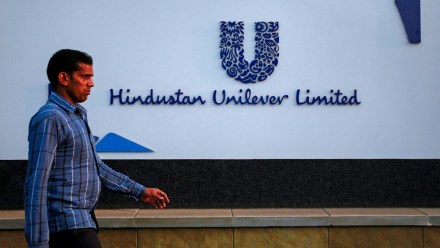Amid the global headwinds and a challenging backdrop, India appears to be the silver lining and is poised to leapfrog into the future, said Nitin Paranjpe, Chairman, Hindustan Unilever Limited during the 90th Annual General Meeting. While talking about the few factors that will help India’s journey to become the world’s third largest economy by 2027 surpassing Japan and Germany, he said this will be led by a favourable demographic profile, rising consumption, enviable digital public infrastructure, investments and a culture of innovation and enterprise. “The country’s ambition of becoming a high-middle income country by 2047, when the nation celebrates 100 years of independence, is a definite possibility,” he added while delivering his speech titled ‘Transforming to Win in the New India’.
He said that a growing young population can often translate into a growing economy and India, with one of the world’s largest populations of youth, can reap the benefits of its demographic dividend in the years to come. He added that with about 66 per cent of the country’s population below 35 years of age and 40 per cent in the age bracket of 13-35 years, the country is predicted to become home to one-fifth of the global workforce.
Furthermore, India is also witnessing a significant rise in consumption which is contributed by factors like growing affluence, urbanization and growing nuclear family structure. Talking about India’s digital public infrastructure, Nitin Paranjpe said that while India missed out on the first and the second industrial revolution, and was too young a nation to capitalise on the third, is today well-poised to lead the fourth industrial revolution. “India is already the world’s largest and fastest growing market for digital consumers with over 750 million internet users that is expected to increase to 900 million by 2025,” he said.
Moreover, he also said that India is a favoured investment destination. “Several policy decisions by the Government including banking reforms, Production Linked Incentive (PLI) schemes, Foreign Direct Investment (FDI) policy, and implementation of the Goods and Services Tax (GST) and initiatives such as Skill India and Digital India, provide a fertile ground for investors,” Nitin Paranjpe during his speech.
The HUL chairman also acknowledged India’s culture of innovation and enterprise. “One of the biggest facilitators for innovation is a rapidly expanding startup ecosystem in the country. From 450 startups in 2016, the number has gone up to a whopping 90,000 in 2023,” he said.
The challenges ahead
While he said that India is ready for the future, Nitin Paranjpe stated that the country needs to also be cognizant of the challenges such as employment, agriculture productivity, low participation of women in the workforce, water, etc., which “if unaddressed, may turn this opportunity into an obstacle”.
The first challenge, he said, was boosting employment for the country’s young workforce and a significant increase in both formal employment and enhanced livelihood opportunities. “India’s labour force participation rate in 2021 at 46 per cent, was amongst the lowest in Asia. Our growth in recent years has primarily been productivity-led, while employment has only increased marginally in the last ten years,” he said. This will also require an enormous focus on building relevant skills, he noted.
On agriculture and allied sectors, Nitin Paranjpe said that nearly 60 per cent of the country’s population is agriculture dependent, but it contributes to about one-fifth of GDP. “On the one hand, there is a need to increase agricultural productivity and on the other, we need to move people out of agriculture dependent livelihoods,” he said. He also noted that Indian farmers produce 2.4 tonnes of rice per hectare of land, which is far lower than its actual potential.
Talking about the participation of women in the workforce, he said women represented only 24 per cent of the workforce according to the World Bank statistics and it is important for India to enhance the participation of women in the workforce. He also stressed on the need for India to create a healthy society with its people to stay healthy and have a better quality of life and thrive.
Finally, he talked about ensuring sustainable growth while maintaining that it is imperative that the nation decouples its growth from environmental impact. The HUL chairman summed up as he added that HUL will continue to partner in the India growth journey through its various initiatives. “We hope that in our very little way, we are able to positively impact the planet and people and partner with this great nation in its journey. After all, it has forever been our belief that ‘what is good for India, is good for HUL’,” he said.
